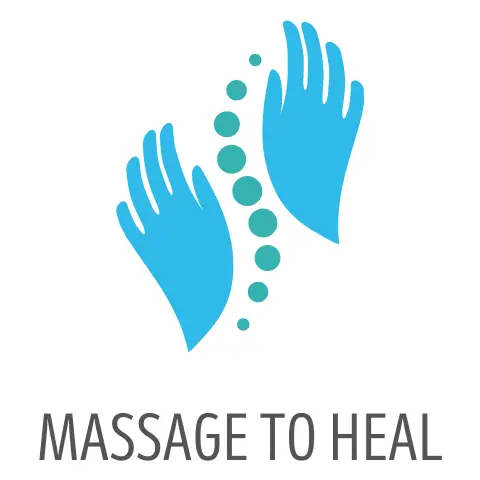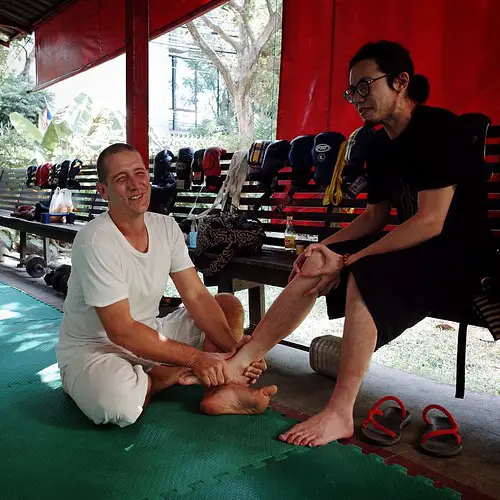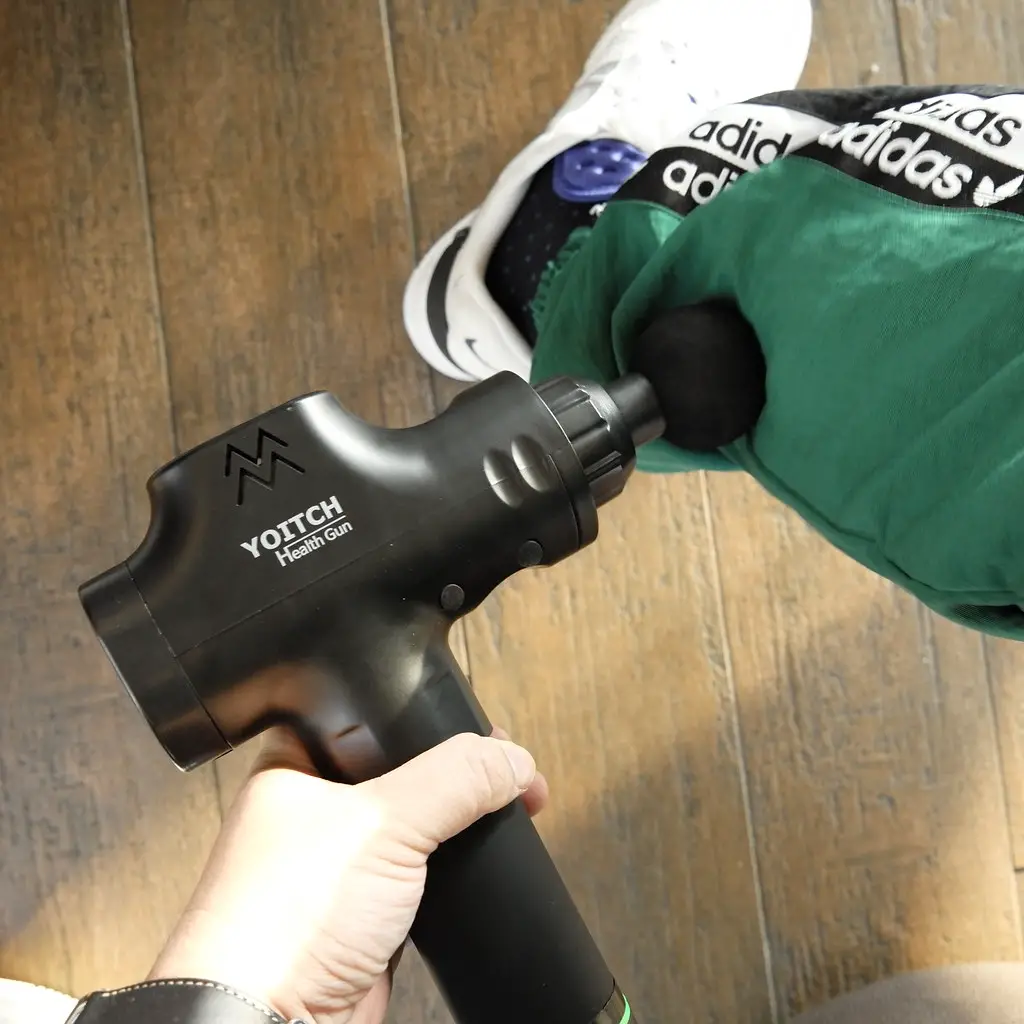Chronic pain affects millions of people around the world, significantly impacting their daily lives and well-being. Exploring alternative and complementary therapies can help alleviate symptoms, and one such therapy that has shown promise in reducing chronic pain is massage. As a non-invasive and viable therapeutic option, massage provides both physical and mental benefits, which can improve overall health and quality of life for those dealing with chronic pain issues.
Table of Contents
- Understanding Chronic Pain
- Massage Therapy and Its Impact on Chronic Pain
- Scientific Evidence for Massage Therapy in Chronic Pain Management
- Safety and Adverse Effects of Massage Therapy
- Incorporating Massage Therapy into Pain Management Plans
- The Effect of Massage Therapy on Mood and Psychological Well-being
- Footnotes
- Frequently Asked Questions
Various research studies have demonstrated the positive effects of massage therapy on pain and discomfort in numerous conditions. By encouraging relaxation, improving blood circulation, and reducing muscle tension, massage can contribute to lowering pain levels across a range of circumstances. Additionally, its ability to promote the release of endorphins, the body’s natural painkillers, further bolsters its effectiveness against chronic pain.
Understanding Chronic Pain
Chronic pain is a complex and persistent issue that affects many aspects of your life. In order to better understand the impact of massage on chronic pain, it’s crucial to first grasp what chronic pain actually is and the factors that contribute to it.
Types of Chronic Pain
There are various types of chronic pain that you may experience, including but not limited to:
- Musculoskeletal pain: Pain affecting muscles, joints, and bones.
- Fibromyalgia: A condition characterized by widespread musculoskeletal pain, fatigue, and tenderness in localized areas.
- Myofascial pain syndrome: A chronic pain disorder involving trigger points and pain that persists in your muscles and tissues.
- Rheumatoid arthritis: A chronic autoimmune disorder causing inflammation, pain, and stiffness in joints.
These conditions can differ in severity and impact on your daily activities. It’s essential to understand the specific type of pain you’re dealing with to select the best treatment method.
Causes and Triggers
While the exact causes of chronic pain may vary depending on the underlying condition, some common factors that could trigger or exacerbate your pain include:
- Physical injury: Injuries can lead to prolonged pain if they’re not properly treated or if your body develops a heightened sensitivity to pain.
- Inflammation: Inflammatory processes in your body can lead to chronic conditions like rheumatoid arthritis, causing persistent pain.
- Stress and anxiety: Emotional factors like stress and anxiety can exacerbate pain perception and contribute to chronic pain development.
- Prolonged muscle tension: Continuous muscle tension, often resulting from stress, can contribute to myofascial pain syndrome or other musculoskeletal pain.
Identifying the types and potential triggers of your chronic pain will help in finding appropriate treatment options, such as massage, to alleviate your pain and improve your wellbeing.
Massage Therapy and Its Impact on Chronic Pain
Types of Massage Techniques
Various types of massage techniques can help alleviate chronic pain. Some common techniques include:
- Swedish massage: This technique uses long, smooth strokes, kneading, and circular movements on the superficial layers of muscle for relaxation and stress reduction.
- Deep tissue massage: As the name suggests, this technique targets deeper layers of muscle and connective tissue, focusing on chronic muscle tension and knots.
- Trigger point massage: This technique focuses on specific areas of tight muscle fibers, or “trigger points,” that can cause pain in other parts of the body.
- Acupressure: Similar to acupuncture, acupressure involves applying pressure to specific points on the body to relieve pain and tension.
You must choose the right technique for your unique needs and preferences and work with a trained and experienced massage therapist to ensure that the session is effective and safe.
How Massage Therapy Affects Pain
Massage therapy can have a significant impact on chronic pain by addressing several factors. Here are some of the ways massage therapy can help alleviate pain:
- Relaxation: Massage stimulates the release of endorphins, the body’s natural pain relievers, leading to a sense of relaxation and well-being. This state of relaxation can help reduce both physical and emotional pain.
- Increased blood flow and lymphatic drainage: Massage helps to improve circulation by increasing blood flow to the affected area, which can help support healing, reduce inflammation, and promote lymphatic drainage. Increased blood flow aids in reducing chronic pain by delivering more oxygen and nutrients to the muscles and tissues.
- Reduced muscle tension and stiffness: Massage works to lengthen and relax the muscles, restoring your range of motion and decreasing stiffness that contributes to pain.
- Reduced inflammation: By promoting blood flow and lymphatic drainage, massage can help reduce inflammation in the body, which may contribute to chronic pain conditions such as low back pain and neck pain.
- Release of fascial restrictions: Fascia, the connective tissue that surrounds muscles and other structures in the body, can become tight and restricted, leading to pain. Massage techniques can help release fascial restrictions, which can contribute to a reduction in chronic pain.
- Reduced substance P: Substance P is a neurotransmitter associated with pain perception. Research has shown that massage can help reduce the presence of substance P, thus alleviating pain.
Incorporating massage therapy into your pain management regimen can help reduce chronic pain and improve your overall quality of life. With a variety of massage techniques available, you can find the most effective way to address your specific pain concerns and work towards a healthier, pain-free life.
Scientific Evidence for Massage Therapy in Chronic Pain Management
Systematic Reviews and Meta-Analyses
When it comes to understanding the efficacy of massage therapy for chronic pain, systematic reviews and meta-analyses should be considered. These studies synthesize the results of multiple research trials, providing an overview of the evidence base for a particular intervention. For example, a review of the evidence found that massage therapy has strong scientific support in the management of back pain.
Furthermore, a meta-analysis by the National Center for Complementary and Integrative Health examined the effectiveness of massage for various chronic pain conditions and reported promising results. Similarly, a Cochrane Library review supports massage as a therapeutic option for certain conditions, although more research is needed.
Randomized Controlled Trials
To delve deeper into the evidence, you should explore randomized controlled trials (RCTs) that investigate the impact of massage therapy on chronic pain. One such study found that lower back pain was reduced and range of motion increased after massage therapy. Another RCT comparing massage types discovered that massage provided better pain relief and improved function compared to usual care in patients with chronic low back pain.
In addition to evaluating the effectiveness in managing pain, RCTs may cover psychological aspects and research challenges, such as muscle tension, adherence to treatment, and selecting the appropriate massage techniques.
From a clinical standpoint, massage therapy is increasingly embraced as a component of complementary and integrative medicine practices. These findings contribute to the understanding of massage therapy as a viable and valuable therapeutic option for your chronic pain management plan. As always, consult with a qualified healthcare professional to determine the most appropriate treatment options for your individual needs.
Safety and Adverse Effects of Massage Therapy
Contraindications and Precautions
When considering massage therapy for chronic pain, it is essential to be aware of certain health conditions and situations where massage may not be suitable or could require modifications. As a patient, you should communicate openly with your therapist about your medical history and any concerns you might have.
Some common contraindications for massage therapy include:
- Open wounds or recent surgery
- Infectious skin conditions
- Acute inflammation or swelling
- Deep vein thrombosis or blood clots
- Severe osteoporosis
In addition, if you have any chronic health conditions, such as heart disease, cancer, or diabetes, it is essential to consult with your healthcare provider before beginning massage therapy. They can help determine if massage is a safe and appropriate choice for managing your chronic pain.
Adverse Events and Side Effects
Research shows that massage therapy is generally considered a safe therapeutic modality with few risks or adverse effects [22].
However, some individuals may experience temporary side effects after a massage session, such as soreness or discomfort in the massaged muscles. These effects are usually mild and resolve quickly. In some cases, allergic reactions to oils used by massage therapists could occur, but this is a rare occurrence source.
In acute care hospital settings, it is essential to be mindful of the patient’s overall health and any possible contraindications or risks associated with massage therapy for pain management source.
As long as you communicate your needs, preferences, and medical history with your massage therapist and follow any guidelines provided by your healthcare provider, you should be able to enjoy the benefits of massage therapy for chronic pain while minimizing any potential adverse effects.
Incorporating Massage Therapy into Pain Management Plans
Integrative Therapies and Approaches
Incorporating massage therapy into your pain management plan can help improve health-related quality of life and well-being. Massage, a soft-tissue manipulation technique, has been found to have positive effects on chronic low back and neck pain, increasing your pressure pain threshold and alleviating discomfort.
The National Institutes of Health (NIH) in the United States supports the integration of various integrative therapies into a biopsychosocial model of pain management. These therapies, which may include massage, aim to address the physical, psychological, and social factors contributing to chronic pain.
As part of this integrative approach, consider discussing with your healthcare provider about including massage therapy in your treatment plan. This can involve identifying specific techniques, treatment frequency, and goals suited to your needs and preferences. Some possible techniques include:
- Swedish massage: A gentle technique utilizing long strokes, kneading, and circular movements to relax muscles and improve circulation.
- Deep tissue massage: Focusing on deeper layers of muscle and connective tissue, this method relieves chronic muscle tension.
- Trigger point massage: Targeting specific “knots” in muscles, this technique applies concentrated pressure to release tense areas and improve muscle function.
Patient-Centric Healthcare
Embracing a patient-centric approach to healthcare ensures that your pain management plan is tailored to your unique needs. When developing a comprehensive plan to address your chronic pain, it is crucial to consider factors such as your overall health, medical history, and treatment goals.
Incorporating massage therapy should be viewed as one component of a larger treatment plan, which may include medication, physical therapy, or even surgery, depending on your specific needs and desired function-related outcomes. By adopting this holistic approach, you can create a well-rounded strategy that aims to reduce pain and improve your overall quality of life.
Remember, your healthcare provider should always be consulted before implementing any new treatment modalities, including massage therapy. By working together, you can create a personalized pain management plan that optimizes your health and well-being.
The Effect of Massage Therapy on Mood and Psychological Well-being
Anxiety and Stress Relief
Massage therapy can be a valuable tool in promoting relaxation and reducing anxiety levels. Research has shown that massage can help decrease cortisol levels and increase serotonin production, leading to improvements in mood and overall psychological well-being 1. By incorporating massage into your self-care routine, you may be able to more effectively manage stress and anxiety, contributing positively to your overall mental health.
Improving Sleep Quality
In addition to reducing anxiety and stress, massage therapy is believed to assist in improving sleep quality. Insomnia and other sleep disorders are often linked to emotional distress and various psychological aspects2. Through the application of massage techniques, your body may experience decreased muscle tension and stimulation of the parasympathetic nervous system, helping to promote relaxation and improved sleep 3. Furthermore, the increase in serotonin production, which is a precursor to melatonin – the sleep hormone, facilitates better sleep quality4. To maximize the therapeutic purposes of massage, consider incorporating regular sessions into your wellness routine in order to promote overall physical and mental well-being.
Footnotes
- http://oro.open.ac.uk/36626/ ↩
- https://academic.oup.com/painmedicine/article-abstract/18/6/1168/2924776 ↩
- https://onlinelibrary.wiley.com/doi/abs/10.1111/opn.12115 ↩
- https://www.ncbi.nlm.nih.gov/pmc/articles/PMC3091428/ ↩
Frequently Asked Questions
Impact of massage on pain levels
Massage has been shown to reduce pain levels in individuals with chronic pain positively. Studies have explored the connection, finding relief in various cases. While the effectiveness may vary between individuals, in general, massage can help alleviate some of the discomfort experienced due to chronic pain conditions 1.
Massage techniques for chronic pain
Various massage techniques can be employed for managing chronic pain. Each technique may target specific areas of the body or address particular types of pain. Some popular techniques you may consider trying include Swedish massage, deep tissue massage, myofascial release, and trigger point therapy. Each approach has unique benefits, and the right one for you depends upon your needs, preferences, and pain experiences.
Effectiveness of massage in acute care
When it comes to acute care settings, the research on massage’s effectiveness is limited. However, anecdotal evidence suggests that massage may help reduce stress and anxiety in acute care environments, which can indirectly impact pain levels. While more research is needed to understand its role in acute care fully, massage may offer some benefits for patients experiencing stress-induced pain or discomfort.
Deep tissue massage benefits
Deep tissue massage involves applying firm pressure and slow strokes to reach deeper layers of muscle and connective tissue. This type of massage can be highly beneficial for individuals experiencing chronic pain, as it can help break up adhesions and scar tissue that contribute to pain. Deep tissue massage also promotes relaxation, increases blood flow to the area, and helps alleviate muscle tension, all of which can aid in pain management.
Pain gate theory and massage
The pain gate theory proposes that the perception of pain can be blocked if competing sensory signals, such as touch or pressure, are introduced. Massage can provide these competing signals to help “close the gate” and reduce the perception of pain. Through manual manipulation of muscle and soft tissue, massage therapists can generate sensations that compete with the pain signals being transmitted, potentially providing relief to those experiencing chronic pain.
Mechanisms of pain reduction through massage
There are several potential mechanisms by which massage can reduce pain. One such mechanism is the release of endorphins, which are the body’s natural pain-relieving chemicals. Additionally, massage can improve blood circulation, reduce inflammation, and break down excessive muscle tension, all of which can decrease pain perception. Finally, massage can help address underlying causes of chronic pain, such as postural imbalances or restricted range of motion, which can lead to long-term relief when addressed consistently.







